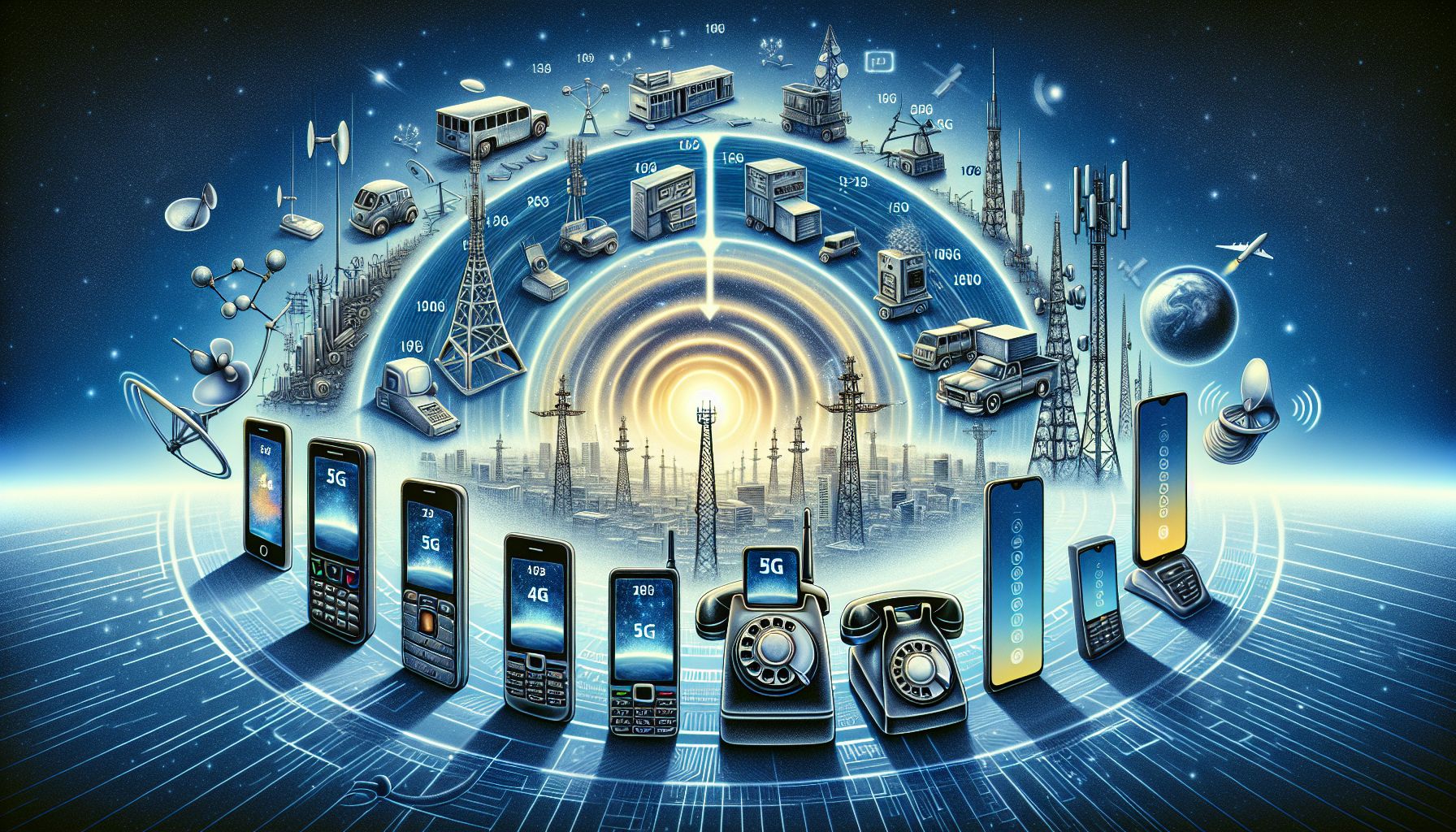📌 Let’s explore the topic in depth and see what insights we can uncover.
⚡ “Did you know, we’re moving at 5G speed towards a world where downloading a high-definition movie could take less than 5 seconds? Dive in to discover a new era of blazing-fast, ultra-reliable, and widespread connectivity.”
In the ever-evolving landscape of digital technology, the introduction of 5G is setting the stage for a new era of connectivity. This fifth-generation technology promises to revolutionize our interaction with technology and the way we connect with the world. From lightning-fast downloads to next-level IoT integration, 5G is set to change the game. 🎮 In this blog post, we will dive deep into the evolution of 5G technology, exploring its origins, its progress, and its potential impact on our digital future. Whether you’re a tech enthusiast, a business professional, or just curious about the future of connectivity, this is a journey that you won’t want to miss. 🚀
📜 A Brief History of Mobile Networks

"5G Technology: Unleashing a New Connectivity Revolution"
To fully understand the significance of 5G, we need to take a quick look at the history of mobile networks. The evolution of connectivity has seen five generations, each with its own unique features and capabilities:
1G
Introduced in the 1980s, the first generation of mobile networks enabled voice calls— a huge leap at the time! 📞
2G
The 1990s saw the introduction of 2G networks, which brought us SMS and MMS capabilities, as well as basic Internet connectivity. 📨
3G
Launched in the early 2000s, 3G networks introduced us to mobile browsing, video calls, and data-driven services. 🌎
4G
The current standard for most of us, 4G (introduced in 2009) provides high-speed internet, HD video streaming, gaming services, and more. 🎬
5G
And now, we’re at the cusp of fully experiencing 5G, which promises to be a game-changer in terms of speed, latency, and connectivity. ⚡ With each new generation, the capabilities of our mobile networks have expanded, shaping the way we communicate, work, and play.
⚙️ How Does 5G Work?
5G technology works much in the same way as its predecessors. However, it uses a higher frequency band (known as millimeter waves) that offers greater bandwidth and faster speeds. These waves are transmitted via a network of small cell sites that are strategically placed in urban areas to provide coverage. The most defining feature of 5G is its low latency. Latency is the time it takes for data to travel from one point to another. In 5G networks, latency could be as low as 1 millisecond, compared to around 50 milliseconds in 4G networks. This means that 5G can support real-time interactions, making it ideal for applications like autonomous vehicles, remote surgeries, and virtual reality experiences. 🚗💉🎮
🚀 The Evolution of 5G Technology
Since the inception of 5G technology, there has been a significant evolution in its development and implementation.
Phase 1 - Research & Development
The early stages of 5G saw extensive research and development, with tech giants like Samsung, Huawei, and Qualcomm leading the charge. During this phase, the potential of 5G was explored, and its foundational technology was developed. 🔬
Phase 2 - Testing & Trials
After R&D, 5G moved into the testing phase. Network providers conducted trials to evaluate the performance of 5G under different conditions and to identify potential issues. 🧪
Phase 3 - Deployment
The current phase of 5G is its deployment. Network providers around the world are rolling out their 5G networks, and we’re starting to see the first wave of 5G-enabled devices. 📱
🌐 The Impact of 5G on Our Digital Future
The arrival of 5G is set to usher in a new era of connectivity, the ramifications of which will be felt across various sectors. Here are some of the areas where we can expect significant changes:
Internet of Things (IoT)
With its low latency and high-speed connectivity, 5G is poised to take IoT to the next level. From smart homes to smart cities, the potential applications are endless. 🏡🏙️
Autonomous Vehicles
5G’s real-time data transmission capability will play a crucial role in the advancement of autonomous vehicles, enabling them to communicate with each other and with traffic management systems. 🚗
Healthcare
In the healthcare sector, 5G could enable remote patient monitoring, telemedicine, and even remote surgeries, revolutionizing the way we approach healthcare. 🏥
Entertainment
With its high-speed data capabilities, 5G could revolutionize the entertainment industry, making high-quality streaming, virtual reality, and augmented reality experiences more accessible. 🍿
🧭 Conclusion
The evolution of 5G technology marks the dawn of a new era in connectivity. As this technology continues to evolve, we can expect to see a transformative impact on various sectors, from healthcare to entertainment. While we’re still in the early stages of 5G deployment, the potential of this technology is truly exciting, and the future of connectivity looks bright. 🌞 In the words of tech guru Kevin Ashton, “5G will be the post-smartphone era. No cords, no keyboards, just gestures and spoken commands.” So, buckle up and get ready for a thrilling ride into the future of connectivity! 🚀
🤖 Stay tuned as we decode the future of innovation!
